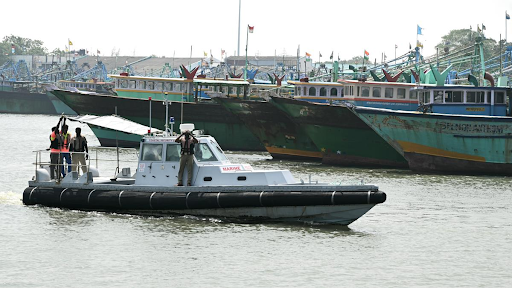



The DRDO recently achieved a significant milestone by successfully testing a scramjet combustor for 120 seconds, a critical step in developing hypersonic missiles. This technology allows speeds over Mach 5, overcoming air defense systems. With innovations like indigenously developed endothermic fuel and thermal barrier coatings, India advances in hypersonic weaponry.

Disclaimer: Copyright infringement not intended.
The Defence Research and Development Organisation (DRDO) recently demonstrated the scramjet combustor ground test for 120 seconds for the first time in India.
The Ministry of Defence (MoD) has called it a crucial milestone in developing next-generation hypersonic missiles.
Feature |
Details |
|
Developed by |
Laboratory of Defense Research and Development (DRDL), Hyderabad.
|
|
Focus |
The technology of supersonic combustion with long life (scramjet). |
|
Capability |
Allows hypersonic speeds (higher than Mach 5). |
|
Advantage |
Overcomes traditional air defense systems, making it more difficult to intercept. |
|
Global Context |
Nations like the USA, Russia, China, and India are leading in hypersonic weapons development. |
|
Significance of Hypersonic Missiles |
Provides fast, powerful strikes while evading current air defense system. |
Key Achievements |
|
|
Endothermic Scramjet Fuel |
Developed indigenously by DRDL in collaboration with industrial partners. |
|
Offers dual benefits: significant cooling improvement and easy ignition. |
|
|
Thermal Barrier Coating (TBC) |
Developed using advanced ceramic technology to endure extreme temperatures beyond melting points. |
|
Jointly developed by DRDL and DST devices. |
|
Aspect |
Turbojet |
Ramjet |
Scramjet |
|
Operation |
Compresses air using a turbine; burns fuel |
Uses forward motion to compress air |
Advanced supersonic combustion ramjet |
|
Speed Efficiency |
Subsonic to low supersonic speeds |
Supersonic speeds (Mach 3 to Mach 6) |
Supersonic speeds (higher than Mach 5) |
|
Combustion Process |
Subsonic air combustion |
Subsonic combustion with compression |
Supersonic air combustion |
|
Air-Fuel Type |
Kerosene or hydrocarbons |
Aircraft fuel or hydrocarbons; uses oxygen from atmospheric air |
Fuel and oxygen from atmospheric air |
|
Moving Parts |
Includes turbines and compressors |
Without moving parts; uses air compression |
Without moving parts; advanced flame stabilization |
|
Operational Ability |
Suitable for lower speeds and take-off |
Needs to achieve supersonic speeds |
Requires assistance to achieve hypersonic speeds |
|
Efficiency |
Less effective at high speeds |
Effective at sustained supersonic speeds |
Extremely effective at hypersonic speeds |
|
Applications |
Commercial aircraft, military fighter jets, supersonic flights |
Supersonic missiles, space vehicles, weapons |
Hypersonic glide vehicles (HGV), hypersonic controlled missiles (HCMs) |
|
Examples |
Subsonic missiles, Nirbhay |
BrahMos supersonic missile |
Hypersonic glide vehicles, hypersonic controlled missiles |
READ ABOUT
Source:
|
PRACTICE QUESTION Q.Scramjet technology represents a significant advancement in hypersonic flight capabilities. Discuss the principles behind scramjet propulsion, its development status, and the potential implications for India's space and defense sectors. (250 words) |





© 2025 iasgyan. All right reserved